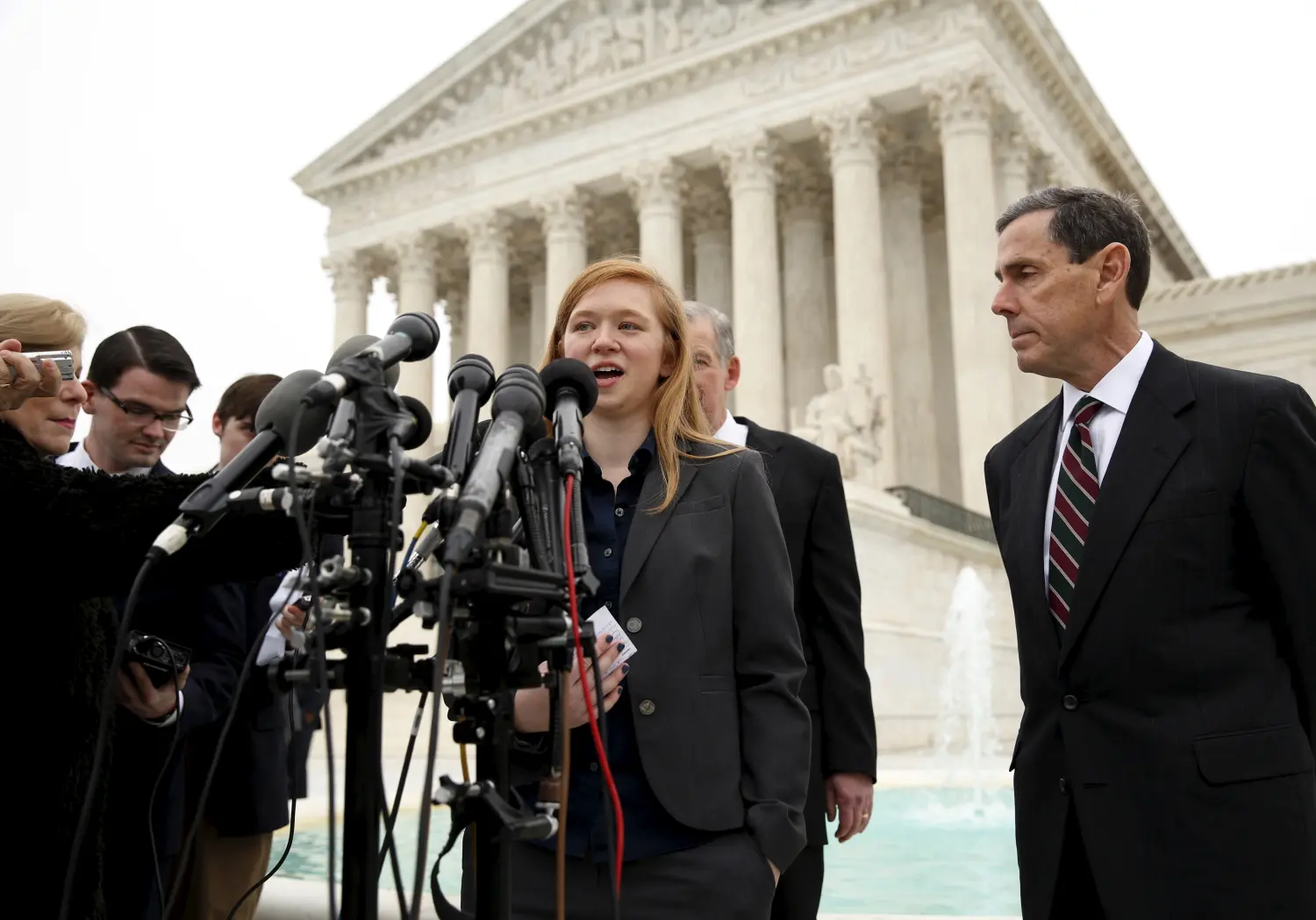In 1978, the Supreme Court said that the only permissible reason to consider race in school admissions is to create a diverse student body to enhance the educational experience. In a 2003 University of Michigan case, the Court held that a diverse student body was a “compelling interest” but that efforts to achieve it must be narrowly tailored to serve that goal, not broader goals such as racial balance.
The matter is before the Court again. Today, it heard oral argument in a case brought by conservative public interest lawyers on behalf of Abigail Fisher, a white woman who claimed that in 2008 the University of Texas at Austin (UT) denied her the constitutionally promised “equal protection of the laws” by refusing her admission under a policy that took race into consideration. Fisher has since graduated from Louisiana State University.
The Court’s decision could range from dismissal to—and here’s where the betting money seems to be—invalidating the UT plan or going further and outlawing any consideration of race in college admissions.
The case first came to the Court in 2013, when seven justices said the Fifth Circuit’s court of appeals, in upholding the UT policy, failed to use the “strict scrutiny” required in examining race-based programs. The Court sent it back for reconsideration, and the court of appeals again upheld the UT policy. Fisher’s brief asks the Supreme Court to reverse again, arguing that UT “has never been clear about precisely why it needs to use racial preferences” (emphasis in original).
UT bolsters minority enrollment in two ways. One, not under challenge, is a 1996 statutory requirement that it admit applicants who graduate in the top ten percent of their Texas high school. Because of Texas’s many segregated high schools (as cited in UT’s brief, the court of appeals noted that over half the Hispanic and 40 percent of black students in Texas attend such schools), the statute produces more minority UT students than might be admitted otherwise. Under the statute, UT limits top-10 percent students to 75 percent of the entering class.
UT, though, claimed that the top 10 percent rule by itself is too rigid, doesn’t allow consideration of other criteria, and failed to increase the minority population adequately. Thus in the wake of the 2003 Michigan case, it implemented a “holistic” policy for the remaining 25 percent, based on what it calls a “broad vision of diversity” that looks to numerous factors such as socio-economic background and special talents as well as race and ethnicity. It argues that the policy is essential for the flagship university of a highly diverse state. In response, Fisher said that “UT never provided any support for its pernicious assumption that only those minority students from well-funded, mostly white high schools possess the talents and backgrounds necessary for UT to achieve a diverse student body.”
There are at least five possible outcomes:
- The Court may determine that Fisher lacks standing to bring the case because she has suffered no loss that a judicial decision can remedy. She is at present seeking only return of her $100 admissions fee, which (argues UT), she would have paid even had she been admitted. And (further argues UT) she was not qualified for admission under either the top 10 percent rule or the “holistic” policy (her “academic index” score did not reach the minimum set that year). Because the Court did not question her standing in 2013, though, it seems unlikely to question it now.
- The Court may again return the case to the court of appeals for further review or to order a trial to settle some of the factual disputes about the case. Although there was some discussion of this possibility in oral argument, such a disposition seems unlikely.
- It may let the court of appeals’ conclusion stand: A least five justices might determine that UT’s holistic consideration of race among other factors is valid under the Court’s precedents. For that to happen, Justice Kennedy and one of the four justices in the so-called conservative wing would have to join Justices Ginsburg, Breyer, and Sotomayor in siding with UT. (Justice Kagan has recused herself, probably because she had some involvement with the case in the lower courts as solicitor general.) It’s at least conceivable that Justice Kennedy might join the three in the more liberal wing, but nothing in today’s oral argument suggested that one of the other four would do so. (But if Kennedy alone joined the other three more liberal justices, the Court would split four-to-four, and, the court of appeals’ decision would stand by default.)
- A majority may agree with Fisher that, although an admissions policy that considers race may be valid if it is narrowly tailored, UT’s policy is not sufficiently narrowly tailored.
- Or, a majority may say that any policy that specifically considers race—regardless of the policy’s objective and of other factors also considered—denies equal protection to applicants who are not in the racial or ethnic minorities in question. Joan Biskupic reports that five justices, in the 2013 iteration, were initially ready to invalidate the UT plan, although eventually seven justices decided to send it back to the court of appeals (even as Justice Thomas’s concurring opinion called for overruling the 2003 Michigan case on which UT based its “holistic” program). [1]
Either way—if the UT plan gets thrown out but the precedents survive, or if they get overruled—schools are likely to give preferences to students from low socio-economic backgrounds, letting that variable serve as something of a proxy for racial or ethnic minorities. That has been the trend in states that already explicitly bar consideration of race in admissions.
The case is being closely watched. Close to 80 “friend of the court” briefs have been filed, most of them supporting UT, including by numerous universities, Fortune 100 businesses, military leaders, and the Obama administration.
Stay tuned for a likely late-June decision.
[1]“May It Displease the Court: Race and Justice Sotomayor,” ProPublica, July 8, 2015, https://www.propublica.org/article/may-it-displease-the-court-race-and-justice-sotomayor
The Brookings Institution is committed to quality, independence, and impact.
We are supported by a diverse array of funders. In line with our values and policies, each Brookings publication represents the sole views of its author(s).










